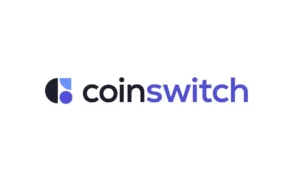As cryptocurrency adoption continues to surge across India, more traders and investors are entering the digital asset ecosystem. As more users enter the crypto space, the demand for affordable and cost-efficient trading platforms has increased significantly. Every rupee saved on trading, deposit, or withdrawal fees can significantly improve profitability—especially for frequent traders and those managing diversified portfolios. That’s why choosing a crypto app with a low or transparent fee structure is more crucial than ever in 2025.
Why Trading Fees Matter in Crypto
Unlike traditional stock exchanges, crypto platforms have a variety of fees that may not always be transparent. From maker-taker fees to spreads, deposit charges, and network fees, the real cost of trading can often exceed what users expect.
Let’s consider this: If you make 20 trades a month and pay an average 0.5% fee on each transaction, you’re effectively losing 10% of your capital annually just in trading fees—without factoring in network or withdrawal costs. For Indian crypto investors, this makes the choice of platform a serious financial decision.
What Does “Zero-Fee” Crypto Trading Actually Mean?
The term “zero-fee trading” has become popular in marketing campaigns, but it rarely tells the whole story. Most platforms that advertise zero trading fees usually make up for it through:
- Widened spreads (difference between buy and sell prices)
- Convenience or priority processing charges
- Hidden network fees during withdrawals
- Currency conversion costs during cross-pair trades (e.g., INR to BTC via USDT)
So, is zero-fee trading a myth? Not entirely—but understanding how a platform earns money is key to determining its actual cost-effectiveness.
Best Low-Fee and Zero-Fee Crypto Apps in India (2025)
Below is a comparative table of the top crypto platforms in India based on their trading fees, product offerings, and usability:
| App Name | Spot Trading Fee | Futures Trading Fee | Key Features |
|---|---|---|---|
| Mudrex | 0.45% – 0.12% | 0.050% – 0.030% | Coin Sets, Transparent Pricing, Good for Beginners |
| CoinSwitch | 0.4% – 0.04% | 0.26% – 0.04% | Simplified UI, Direct INR Trading |
| CoinDCX | 0.50% – 0.03% | 0.050% – 0.030% | Advanced Tools, Widely Trusted in India |
| ZebPay | 0.45% – 0.03% | 0.080% – 0.030% | BTC SIP, Crypto Lending, Secure Wallet |
| Binance | 0.10% – 0.023% | 0.050% – 0.017% | Global Liquidity, Deep Tools for Pro Traders |
Let’s explore each platform and their low-fee advantages.
1. Mudrex: Smart Trading with Transparency

Mudrex stands out for its transparent fee structure and innovative product offerings. It provides tiered trading fees based on monthly volume, going as low as 0.12% for spot trading and 0.03% for futures.
Highlights:
- Zero trading fees on Coin Sets (a thematic investment basket)
- Ideal for both new and experienced traders
- In-depth learning content and 24/7 support
- Fully compliant with Indian regulations
Mudrex’s “Coin Sets” are particularly attractive for passive investors. You can invest in a curated group of tokens with no trading fee, saving on multiple transaction costs.
2. CoinSwitch: Best for Simplicity

CoinSwitch provides a clean, user-friendly interface that is ideal for first-time investors. It allows users to directly buy crypto using INR without needing to understand trading pairs or order books.
Highlights:
- Low entry barrier
- INR-first investing experience
- Competitive trading fees (starting at 0.4%)
- No separate wallet management needed
Although CoinSwitch simplifies trading, spread-based costs may still exist. Users should compare their buy/sell rates with platforms like Binance to understand potential markups.
3. CoinDCX: Power Meets Performance

CoinDCX is one of India’s most robust crypto exchanges, offering both beginner-friendly apps and a pro trading terminal. It provides competitive low fees for high-volume traders, along with robust liquidity across both spot and futures markets.
Highlights:
- Strong liquidity for major trading pairs
- Tight spread and low taker fees for futures
- Staking, margin, and lending options
- ISO certified and highly secure
The platform also includes advanced charting tools for seasoned traders, making it a great all-rounder for both beginners and professionals.
4. ZebPay: Long-Term Investment Options

ZebPay has reinvented itself with features like Bitcoin SIPs and lending programs, targeting long-term holders and passive investors.
Highlights:
- SIP options in BTC
- Earn interest on idle assets
- Zero fee for select pairs during campaigns
- High-security wallet infrastructure
While not the lowest in fees, ZebPay makes up for it with features that help users grow wealth passively, thus offsetting occasional transaction costs.
5. Binance: Global Giant with Indian Access

Although not India-based, Binance is popular among Indian users for its low fees and deep market liquidity. Spot trading fees can go as low as 0.023%, with even lower rates using BNB tokens.
Highlights:
- Lowest global fee structure
- High-volume trading tools
- Strong futures and derivatives ecosystem
- Limited INR deposit/withdrawal options due to regulations
Binance is best for users comfortable with international platforms and who can manage cross-border transaction processes efficiently.
Hidden Crypto Fees to Watch For
Even on low-fee platforms, users often encounter unexpected charges. Here are the most common ones:
1. Spread Fees
These are subtle markups in the buy/sell price of assets. While a 1% spread might seem small, over time, especially with frequent trades, this adds up significantly.
2. Deposit and Withdrawal Fees
INR deposits via UPI are usually free, but instant settlement services may incur minor fees. Crypto withdrawals typically include both platform and network charges.
3. Currency Conversion Costs
If the app doesn’t support INR directly for some coins (like USDT), you might need to convert multiple times (INR → BTC → USDT), each step incurring fees or spread losses.
4. Inactivity or Account Maintenance Fees
These are rare in India but prevalent in global apps. Be sure to review the platform’s terms and conditions carefully to avoid potential long-term penalties or charges associated with low account activity.
5. Tax-Related Deductions
Under Indian regulations, a flat 30% tax on capital gains and 1% TDS (Tax Deducted at Source) on all transactions applies. While not platform-specific, these impact your net profits.
Tips to Minimize Your Crypto Trading Costs
Here are some actionable strategies to help you trade more efficiently and cost-effectively:
1. Compare Real-Time Prices
Always check market rates on global trackers like CoinMarketCap before executing a trade. This helps detect if a platform is using wide spreads disguised as zero fees.
2. Use Coin Sets and Thematic Products
Platforms like Mudrex offer Coin Sets that waive trading fees. Investing in a bundle reduces the cost of diversification.
3. Avoid Over-Trading
Every transaction—whether a trade or swap—has an associated cost. Trade only when necessary and avoid impulse swaps.
4. Store Assets In-App (When Safe)
External transfers trigger network fees. If you’re holding long-term and the app is secure, consider storing assets within the platform.
5. Monitor Network Congestion
Gas fees, especially on Ethereum, spike during high network usage. Try trading at off-peak hours or use platforms that support Layer 2 scaling solutions.
6. Watch for Promotions
Stay updated with platform announcements. Fee waivers are common during new listings, exchange campaigns, and festival promotions.
Transparency vs. Zero Fee: What Really Matters?
While zero-fee claims are attractive, transparency is a better long-term value. A platform that clearly outlines how it earns, what it charges, and when those charges apply is far more reliable.
Opaque platforms may not charge direct fees but extract more from you through manipulation of spreads or poor execution. Opt for platforms that:
- Display fee structures publicly
- Offer clear T&Cs for deposits/withdrawals
- Disclose how spreads and network fees are calculated
Conclusion: Choose Value, Not Just Free
The crypto market in India is maturing rapidly, and with it comes increased scrutiny on how exchanges operate. While many apps market themselves as “zero-fee,” a deeper analysis shows that hidden costs often outweigh apparent savings.
Platforms like Mudrex strike a good balance by offering transparency, innovative features like Coin Sets, and reasonable trading fees. Others like CoinDCX and CoinSwitch also cater well to different user segments.
Ultimately, the best crypto app for low fees in India is the one that aligns with your trading style, investment goals, and demand for transparency. Don’t just chase “free”—chase smart.
FAQs
1. What is a zero-fee crypto app?
A platform that claims to charge no direct commission for trading. However, users should investigate if spreads or other fees apply.
2. Is Mudrex a zero-fee platform?
Mudrex offers zero trading fees on Coin Sets and competitive rates on spot and futures trading, along with complete transparency.
3. Are spread-based platforms cheaper?
Not always. Wide spreads can cost more than fixed trading fees, especially during volatile markets.
4. Can I trade crypto in India without paying tax?
No. A 30% capital gains tax and 1% TDS apply to all eligible crypto transactions in India.
5. Which app is safest for crypto in India?
Mudrex, CoinDCX, and ZebPay have solid reputations for security, regulatory compliance, and customer support.
6. What are Coin Sets, and how do they save money?
Coin Sets are curated baskets of tokens. By investing once in a set, users avoid multiple trading fees, reducing costs.
7. How can beginners reduce crypto trading costs?
Use platforms with transparent pricing, invest via Coin Sets, avoid frequent swaps, and monitor network congestion.

